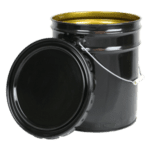
Single Packaging Variations
When it comes to UN rated single packaging, there are specific regulations and guidelines that must be followed. This type of packaging is designed to safely transport dangerous goods, and any modifications to their structure or components can compromise their integrity and safety.
In general, UN rated single packaging is not meant to be altered or modified after they have been certified. The UN rating applies to the packaging in its original tested state, and making changes could potentially void this certification. However, there are some minor variations (changes) that may be permitted under certain circumstances.
What Changes are Allowed for Single Packages?
First of all, what is a single package? A single packaging as defined by the 49CFR is a non-bulk packaging other than a combination packaging. Essentially single packaging is a packaging that can be used to ship dangerous goods on its own, without any inner packaging. Examples may include a UN rated drum or Jerrican. Much like combination packaging, if you are not careful any changes that are made can potentially void the UN test certificate.
In the 49CFR at 178.601 (g) (5), it says that single packaging is only allowed to differ to the extent of the closure that is used. But it’s not quite that easy, you are only allowed to change to a different type of closure provided that an equivalent level of performance is maintained. What this means in this case is the replacement closure and packaging must successfully pass drop testing in the orientation which most severely tests the integrity of the closure. In addition, if the packaging is intended to contain liquids, it must also successfully pass the leakproofness test, the hydrostatic pressure test, and the stacking test. So, in a nutshell, some further testing is required if you change to a different type of closure on a UN rated single packaging, but not the full array of UN packaging tests. In Canada, TP14850 has a similar reference to this located at 8.1.1.8, but the additional tests mentioned above are not referenced.
In addition to this, manufacturers of single packaging are allowed to reduce the size of the tested manufactured single packaging, but some restrictions apply. Per the 49CFR 178.601 (g) (3) it says that packaging other than combination packaging (which would mean single packaging) can be produced with reductions in external dimensions (i.e., length, width, or diameter) of up to 25 percent of the dimensions of a tested packaging without further testing provided an equivalent level of performance is maintained. In this case this means that the packaging must, in all other respects (including wall thicknesses), be identical to the tested design-type. In addition, the marked gross mass (when required) must be reduced in proportion to the reduction in volume. So, one UN test can be used to produce smaller versions of the same exact tested design type that meet the above regulations. In Canada, TP14850 has a similar reference to this located at 8.1.1.3 which essentially says the same thing other than the 25 percent dimension restriction is not mentioned.
Do you have questions about UN Packaging? Take a look at our UN Packaging FAQ or contact our team of experts at 855.734.5469 or send us an email, we’re happy to help.
Stay up to date and sign up for our newsletter!
We have all the products, services and training you need to ensure your staff is properly trained and informed.
 Steel Open Head Pail Steel Open Head Pail |
 4G UN Lithium 4G UN LithiumBattery Box |
 Shipping Dangerous Shipping DangerousGoods by Air |






 ICC USA
ICC USA ICC Canada
ICC Canada